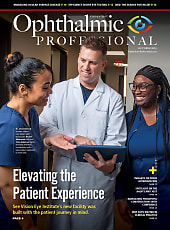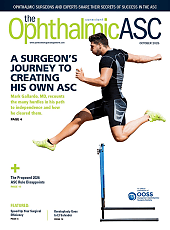A new multicenter retrospective cohort study found that patients undergoing retinal detachment (RD) repair who had a history of long-term cannabis use were less likely to develop postoperative proliferative vitreoretinopathy (PVR) compared to matched controls without previous cannabis exposure. Although evidence from the study, recently published in JAMA Ophthalmology, suggests a potential protective association between cannabis use and PVR risk, the absolute reduction in incidence was modest.
In their study, Ahmed M. Alshaikhsalama, MD, of UT Southwestern Medical Center in Dallas and colleagues analyzed electronic health records from the TriNetX research network that spanned from February 1, 2005, to February 1, 2025. Eligible patients underwent primary RD repair using 1 of 3 methods: pars plana vitrectomy (PPV) with or without scleral buckle, primary scleral buckle, or pneumatic retinopexy.
Inclusion in the cannabis cohort required both a diagnostic code for cannabis-related disorder and a positive cannabis confirmation in urine or blood. After 1:1 propensity score matching for demographics and clinical variables—including cigarette use, myopia, vitreous hemorrhage, and ocular trauma—each cohort included 1193 patients. Patients’ mean age was 53.2 years and 69.7% were male.
At both 6 months and 1 year following retinal detachment repair, cannabis users demonstrated significantly lower rates of PVR and need for complex reoperation compared to controls. At 6 months, the incidence of PVR was 2.10% among cannabis users versus 4.36% in the control group (relative risk [RR]=0.48; P=.002), and by 1 year, those rates were 2.52% versus 4.61%, respectively (RR=0.55; P=.006). For complex retinal detachment repairs, the 6-month rates were 3.10% in the cannabis group compared to 5.03% in controls (RR=0.62; P=.02), and at 1 year, 3.52% versus 5.62%, respectively (RR=0.63; P=.01).
In a secondary analysis of 813 patients per group of PPV with or without scleral buckle only, 2.34% patients in the cannabis cohort vs 4.55% of patients in the control group had PVR at 6 months (RR=0.51; P=.01), At 1 year, 2.95% of cannabis cohort patients vs 5.04% of controls had PVR (RR=0.59; P=.03). No statistically significant differences were observed in rates of complex repair in this subgroup.
A Cox proportional hazards model identified the following risk factors for PVR at 1 year:
-
vitreous hemorrhage (hazard ratio [HR] = 1.62)
-
ocular trauma (HR = 1.83)
-
myopia (HR = 1.29)
-
cigarette use (HR = 1.50)
These risk factors have also been established in previous studies, the authors noted, as has the complicating factor of cannabis and tobacco use.
At the 1-year timepoint, the authors reported a reduction in PVR risk that was associated with cannabis use (HR=0.49).
The authors cautioned that the absolute risk reduction (~2%) may limit clinical utility. The study was also constrained by potential underreporting of cannabis use and the inability to assess visual acuity or quantify cannabis exposure. Additionally, cannabis users in the cohort showed higher rates of systemic comorbidities like GERD, pulmonary disease, and anxiety.
“Cannabis ranks as the third most consumed psychoactive substance globally after alcohol and tobacco, and its use continues to increase,” the authors wrote. “Accordingly, counseling patients on surgical complications and risk management from behaviors such as cigarette or cannabis use is of pertinent concern, especially as this may not be voluntarily provided to medical staff because of social stigma tied to its use.” They concluded, “While this protective association noted with cannabis use could be due to the population using it rather than an effect of the cannabis itself, the findings suggest that cannabis use might have a role in reducing PVR development. Intervention trials would be needed to try to control for confounding factors.”
A full list of author disclosures can be found in the published article. RP








